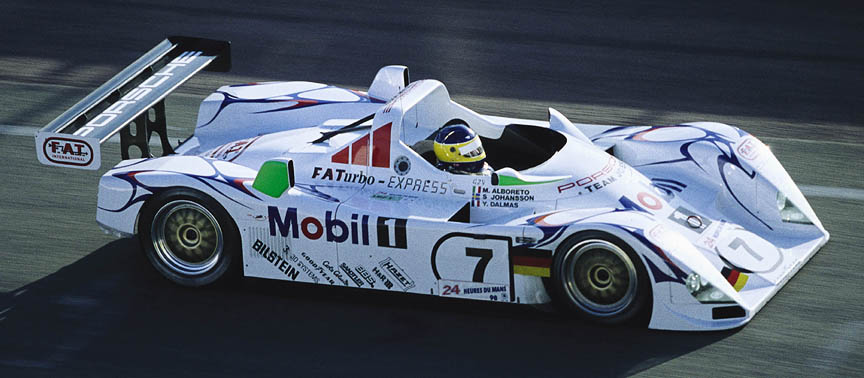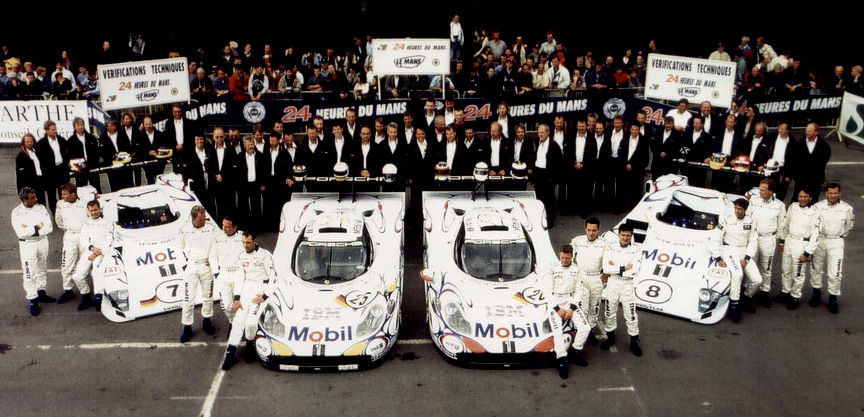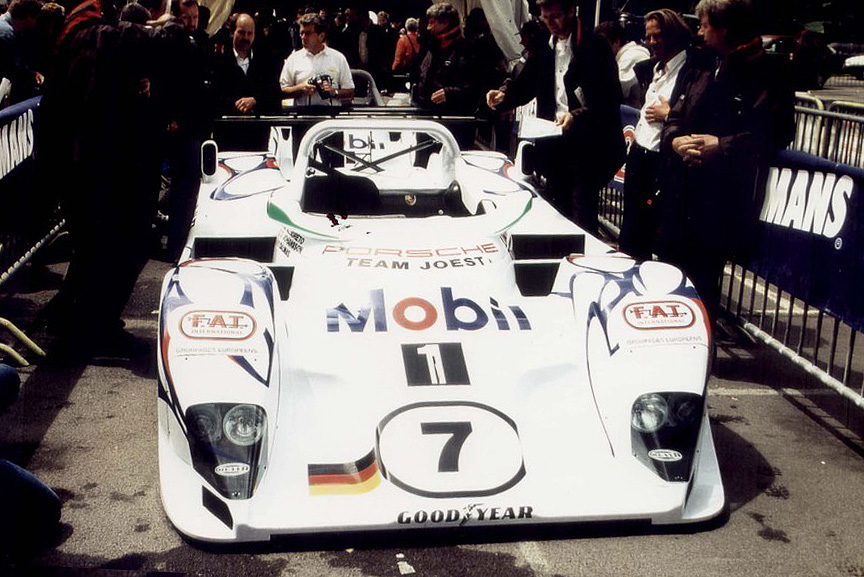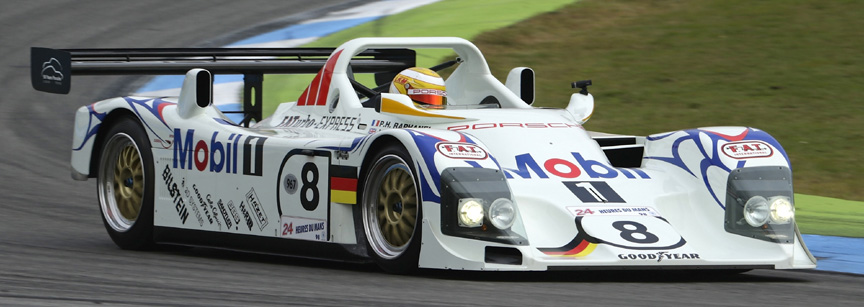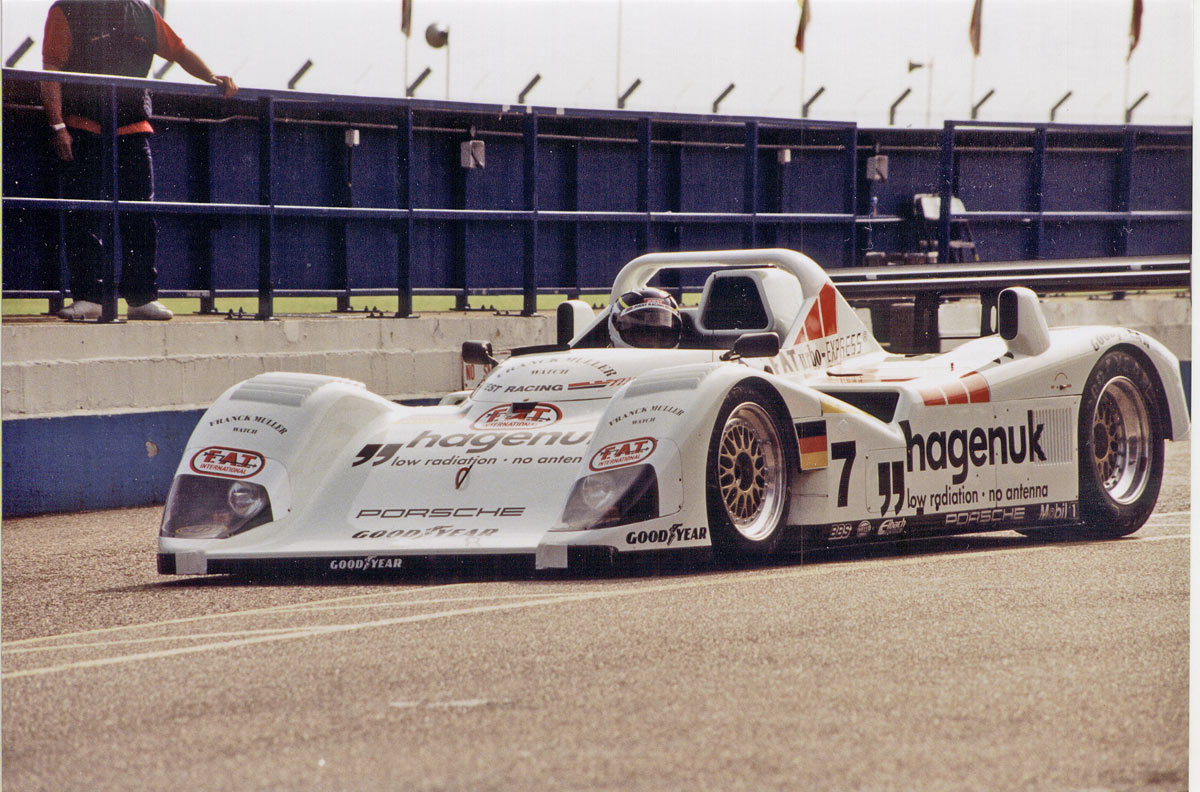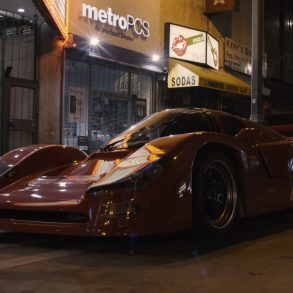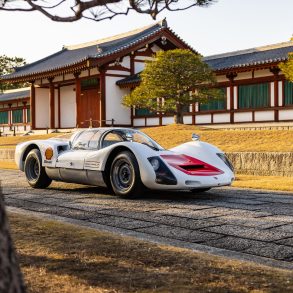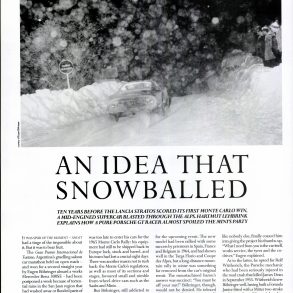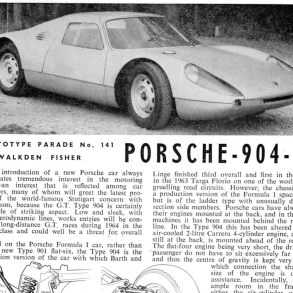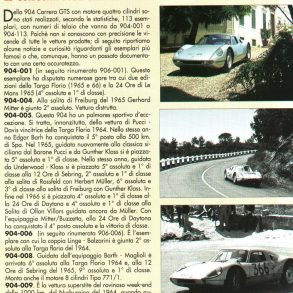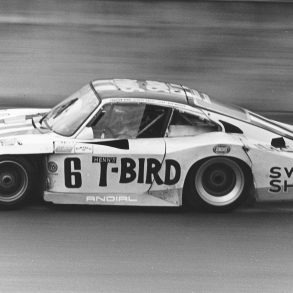Porsche WSC-95 & Porsche LMP1-98 (1998)
Category: Le Mans Prototype / Constructor: Porsche AG & Tom Walkinshaw Racing / Predecessor: Porsche 962C / Successor: Porsche RS Spyder / Engine: Type-935 Flat-6 Turbo mid-engine
The Porsche LMP1-98 was not an original creation by Porsche, it used the TWR-chassis. To trace the roots of Porsche LMP1-98, we have to go back in history and not in Porsche’s history. Jaguar had years of good cooperation with Tom Walkinshaw Racing and the bold next step was to create a Jaguar for World Sportscar Championship Group C to compete against the domination of Porsche 962. TWR built the chassis and Jaguar supplied the engines and the Jaguar XJR-6 was ready in 1985, but not in time for Le Mans (despite three XJR-6 being signed up for Le Mans). The XJR-6 entered the Le Mans finally in 1986 and its evolution, the XJR-8, finished 5th in 1987. A year later, in 1988 the hard work was rewarded with the victory at Le Mans for XJR-9. The success was repeated in 1990 with XJR-12.
For 1991 the XJR-14 was created and important chassis number for us is the TWR-791, seventh chassis built for 1991 by Astec/TWR. The TWR-791 XJR-14 won the 1991 Sportscar World Championship Nürburgring race. Later the TWR-791 found its way to Porsche where it was renumbered as WSC95-001 and a 3-litre Porsche turbo engine was installed. The bodywork was also new – the earlier coupé became a spyder. Porsche had designed this open prototype for racing in the USA, but aborted the campaign after a short-term rule change for 1995. Former race driver and a profiled motorsports team boss Reinhold Jöst took over the existing prototype from Porsche and had the aerodynamics as well as the suspension thoroughly modified by the Weissach engineers at his own expenses.
A second car was built, the WSC95-002, which had a new chassis not previously used by Jaguar. WSC95 cars featured carbon-fibre monocoque, carbon-fibre plastic body and flat underbody. The Joest Racing entered WSC95-001 won the Le Mans in 1996 and 1997. The car was signed up for Le Mans as a TWR WSC95. The WSC95-002 qualified as the fastest car for the 1996 Le Mans, but failed in the race because of electrics problem.
Then the two WSC95 became Porsche’s factory team cars and were fitted with 3.2-litre Porsche turbo engines. They were renamed as Porsche LMP1-98 and signed up for 1998 Le Mans 24 hour race.
Race Results
Chassis WSC-95 #001
- 1996 24 Hours of Le Mans #7 – Winner
- 1997 ISRS Donington Park #7 – Winner
- 1997 24 Hours of Le Mans #7 – Winner
- 1998 24 Hours of Le Mans #7 – DNF
- 1998 Petit Le Mans #77 – 2nd
ChassisWSC-95 #002
- 1996 24 Hours of Le Mans #8 – DNF
- 1998 24 Hours of Le Mans #8 – DNF
